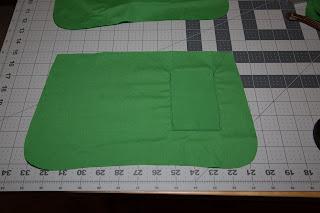I've sewn garments for many years, but I've never actually used an invisible zipper foot. In fact, I've actively avoided garments that required invisible zippers. I tried installing one with a regular zipper foot, with not very good results.
I bought a Viking Husqvarna invisible zipper foot to use on my machines, which are all Vikings. I'm making a dress with an invisible zipper, so this seemed like an excellent time to try it out.
The zipper good has a large ridge down the middle which pushes the zipper coils to the side as you sew. First you sew down one side.
Then you sew down the other side. The needle stays in the middle while sewing, but the zipper coil moves to the other side of the center ridge when you move to the other side.
A regular zipper foot is used to start the seam at the bottom of the zipper, then a regular foot can be used.
The final result is fabulous: an invisible zipper! I'll be using this technique again!
Come back next week for more fun with a sewing machine. You might even get to see the rest of the dress.

































